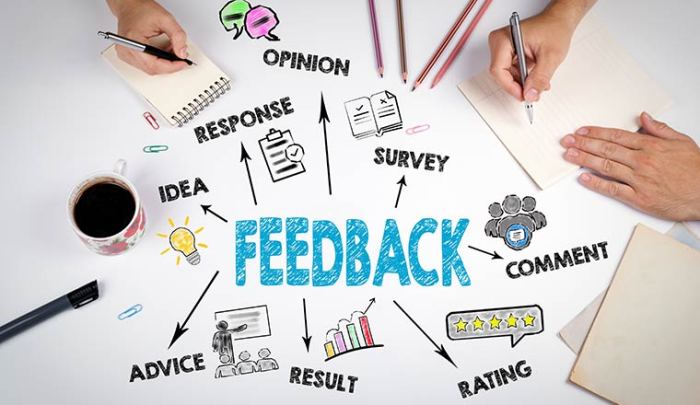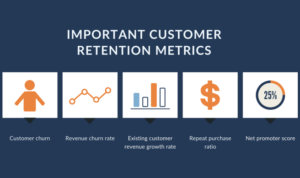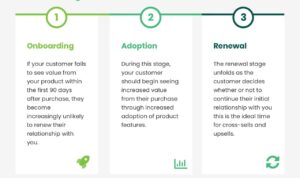Handling Customer Feedback sets the stage for businesses to thrive by understanding the pulse of their customers. Dive into this guide filled with key insights and strategies to ace the customer feedback game.
From the importance of feedback to actionable steps and handling negativity, this rollercoaster ride will equip you with all you need to conquer the feedback frontier.
Importance of Handling Customer Feedback
Customer feedback is like gold for businesses. It provides valuable insights into what customers think about products or services, what they like, and what they don’t. Handling customer feedback is crucial for businesses to improve their offerings and stay competitive in the market.
Customer feedback directly impacts brand reputation. Positive feedback can enhance a company’s image, attract new customers, and build customer loyalty. On the other hand, negative feedback can damage a brand’s reputation, leading to loss of customers and revenue. By actively listening to and addressing customer feedback, businesses can maintain a positive brand image and retain loyal customers.
Companies that have successfully utilized customer feedback include Amazon, which continuously gathers feedback from customers to improve its website and services. Another example is Starbucks, which listens to customer feedback to introduce new products and enhance the overall customer experience. These companies prioritize customer feedback, leading to increased customer satisfaction and loyalty.
Examples of Utilizing Customer Feedback
- Amazon: Actively collects feedback to enhance website usability and customer service.
- Starbucks: Listens to customer feedback to introduce new products and improve the overall experience.
- Apple: Uses customer feedback to make improvements to its products and services.
Strategies for Efficiently Managing Customer Feedback

In order to efficiently manage customer feedback, businesses need to implement key strategies that focus on collecting feedback, categorizing it effectively, and responding in a timely manner to enhance customer satisfaction.
Collecting Customer Feedback
- Utilize online surveys and feedback forms on your website to gather insights from customers.
- Encourage customers to leave reviews on platforms like Yelp, Google reviews, and social media.
- Implement customer feedback tools like Net Promoter Score (NPS) surveys to measure customer loyalty.
Categorizing and Organizing Feedback
- Create categories based on the type of feedback received, such as product suggestions, service complaints, or general inquiries.
- Use a customer relationship management (CRM) system to track and organize feedback for easy access and analysis.
- Tag feedback with relevant s to identify trends and common issues that need to be addressed.
Importance of Timely Responses
- Respond to customer feedback promptly to show customers that their opinions are valued and taken seriously.
- Addressing feedback in a timely manner can prevent negative reviews and improve customer retention.
- Timely responses also demonstrate a commitment to customer satisfaction and can help build trust and loyalty with customers.
Implementing Actionable Steps based on Customer Feedback

Customer feedback is a valuable source of information for businesses to improve their products and services. Implementing actionable steps based on this feedback is crucial for maintaining customer satisfaction and loyalty.
Examples of Actionable Steps, Handling Customer Feedback
- Adjusting pricing based on customer feedback on affordability.
- Improving product features based on suggestions for enhancement.
- Enhancing customer service training based on complaints about rude staff.
Effective Prioritization and Addressing of Feedback
- Segment feedback based on urgency and impact on customer experience.
- Utilize feedback tracking systems to ensure all input is reviewed and addressed promptly.
- Communicate with customers to acknowledge their feedback and provide updates on resolutions.
Implementing Changes in Products/Services
- Conduct thorough analysis of feedback to identify common themes and areas for improvement.
- Collaborate with relevant departments to develop action plans for implementing changes.
- Test changes before full implementation to ensure effectiveness and customer satisfaction.
Handling Negative Customer Feedback: Handling Customer Feedback
When it comes to handling negative customer feedback, it’s essential to respond in a professional and empathetic manner. This shows that you value your customers’ opinions and are committed to providing excellent service. Turning negative feedback into an opportunity for improvement is key to growing your business and building customer loyalty. Addressing negative feedback publicly versus privately can have different impacts, so it’s important to consider the best approach for each situation.
Best Practices for Responding to Negative Customer Feedback
- Respond promptly and acknowledge the customer’s concerns.
- Show empathy and apologize for any inconvenience caused.
- Offer a solution or compensation to resolve the issue.
- Follow up to ensure the customer is satisfied with the resolution.
Turning Negative Feedback into an Opportunity for Improvement
- Use negative feedback as a learning opportunity to identify areas for improvement.
- Implement changes based on the feedback to prevent similar issues in the future.
- Show customers that their feedback is valued by making visible improvements.
Addressing Negative Feedback Publicly vs. Privately
- Addressing negative feedback publicly can show transparency and accountability to other customers.
- Handling negative feedback privately can provide a more personalized and confidential resolution for the customer.
- Consider the nature of the feedback and the customer’s preference before choosing to respond publicly or privately.





